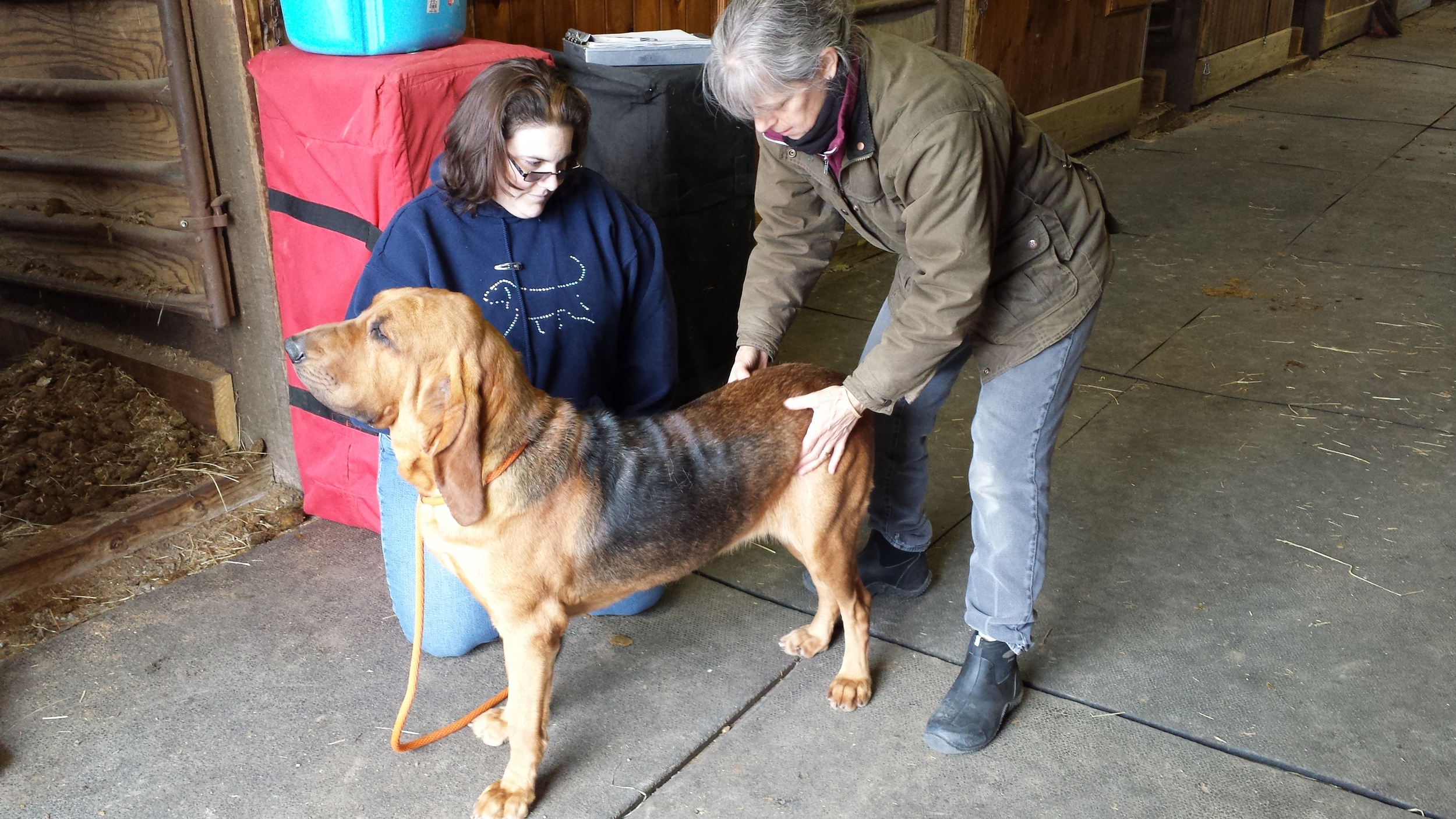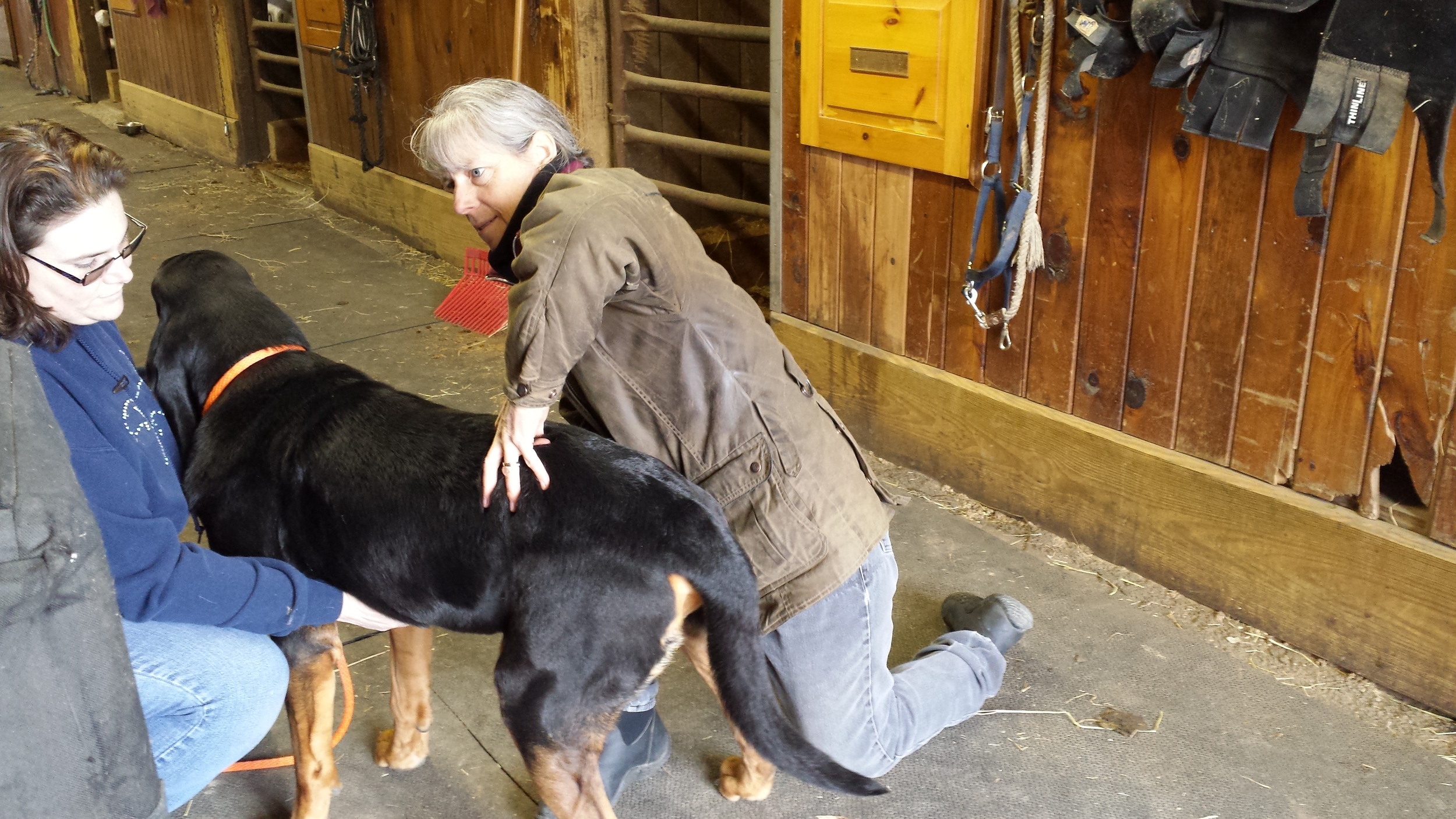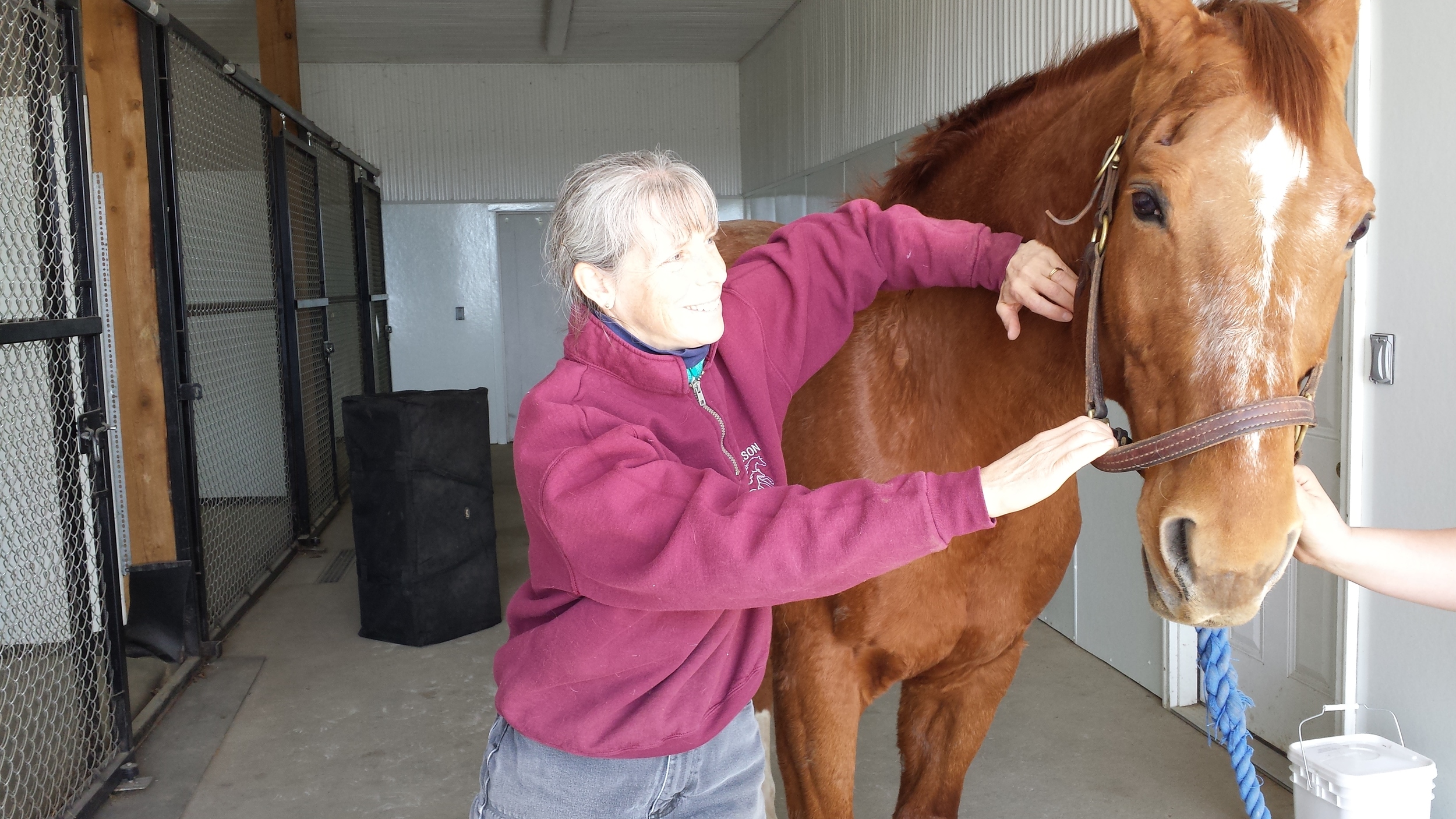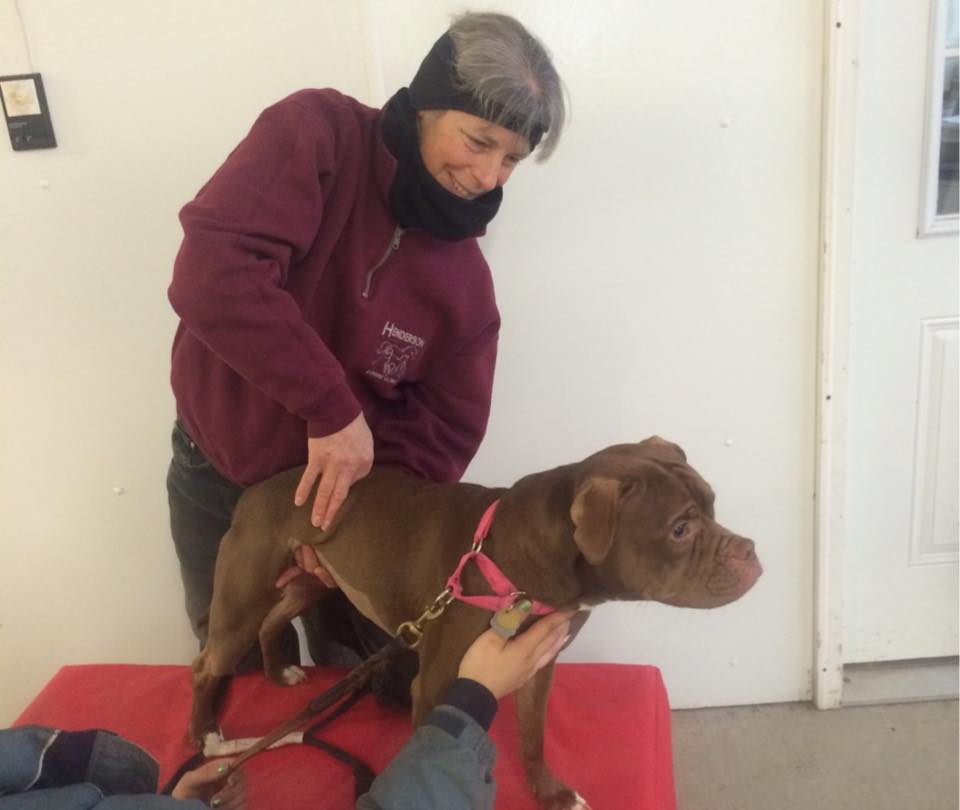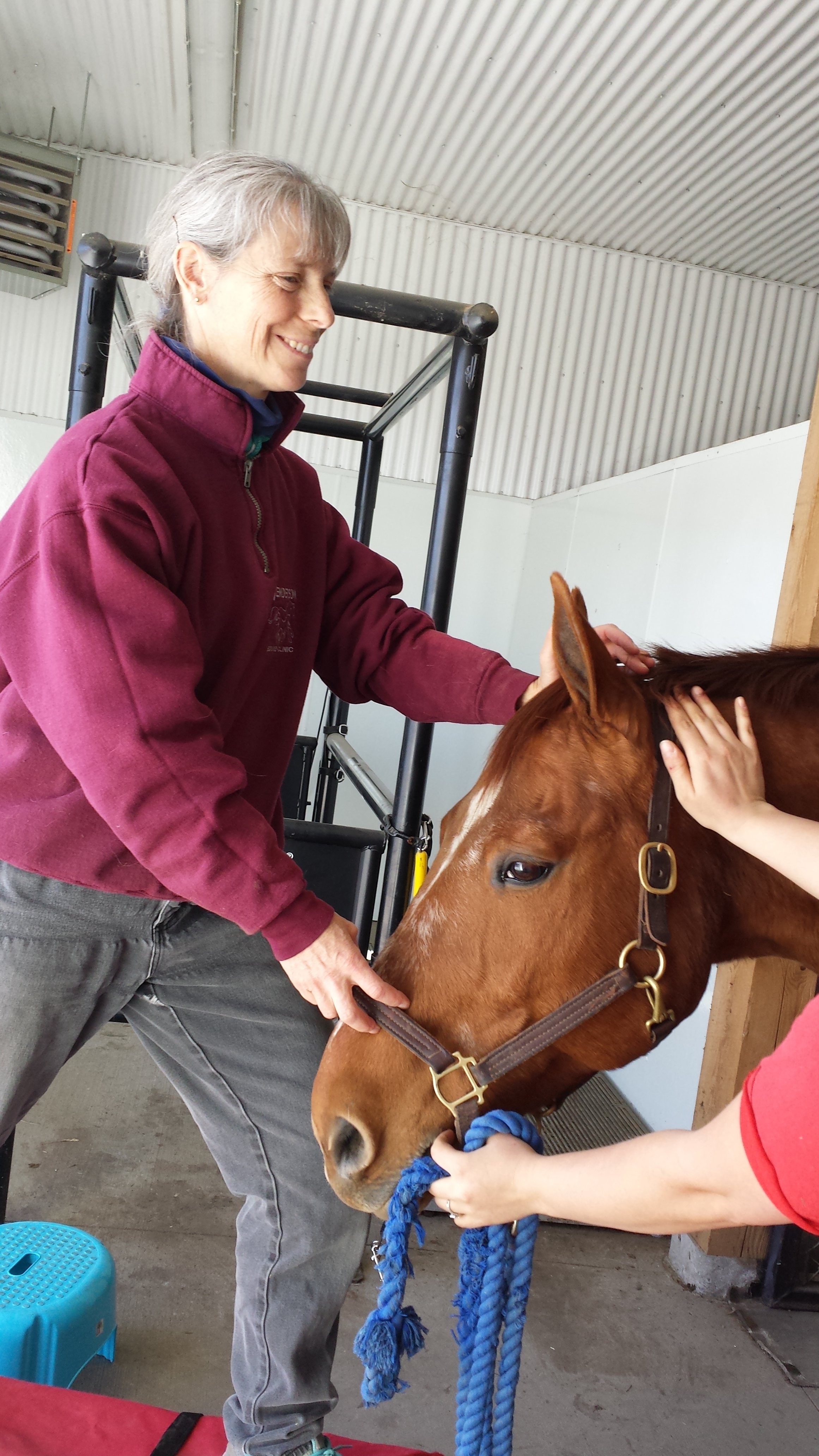Chiropractic treatment is considered an alternative therapy used in a holistic approach to health care. Chiropractic care restores a horses normal movement and symmetry of motion which affects many of the health and performance problems of the horse. It focuses on the health and proper movement and function of all the joints in the horses’ body, but especially the spinal column.
Anatomy
The spinal column is made up of bones, called vertebrae, as well as the surrounding ligaments and muscles surrounding the vertebrae, which protect the spinal cord passing through the center of these vertebrae. The spinal column also functions to support the body and provide sites for muscle attachments. The many nerves that branch off the spinal cord pass in between the vertebrae and go to all parts of the horses’ body. The ligaments and muscles that surround and hold the vertebrae together also allow motion between the bones.
The ligaments, muscles and meeting of two bones forms a joint, called a motion unit in chiropractic circles. There are over 175 motion units in the horses’ spinal column alone. If a motion unit (one specific joint and all the surrounding structures of that joint) is fixed or subluxated (cannot move) the horse cannot function properly until that motion unit is restored to normal motion and function. A motion unit may be completely fixed (no motion in the joint) or partially fixed (a decrease in the normal range of motion in that joint).
Both types of fixation cause the horse to compensate, which requires extra energy. Your horse may have back pain due to a vertebral fixation causing discomfort and compensation. He will require more energy to use different muscles and joints to compensate and perform. Ultimately this leads to fatigue, poor performances, added seconds and over time, if uncorrected, to injuries. Additionally, any vertebral subluxation can affect or ‘pinch’ the nerves branching of the spinal cord and passing through the motion unit at that site. These nerves are the communication lines between the brain and the rest of the body, carrying impulses both to and from all of the structures in the horses’ body, down to every last cell.
What causes a fixation/subluxation?
Traumatic and stressful situations occur throughout the day. Riders, saddle and tack fit, confinement, rigorous exercise, strenuous play, or every day slips and falls can lead to problems in the spinal column and subluxations. For example:
TRAUMA: slips, falls, missteps, missed jumps, being cast in a stall
CONFORMATIONAL TRAITS: long backs, short or crooked legs
BIRTH: a traumatic or normal delivery can affect the mare AND the foal chiropractically
CONFINEMENT: decreases balance and coordination and weakens muscles
PERFORMANCE INJURIES: all disciplines can create trauma and stress
EQUIPMENT: poor fitting or improperly used tack and equipment
AGE: with age the spinal column loses flexibility
SHOEING/HOOF IMBALANCES: create uneven forces up the limb and through the body
TRAILERS: long rides, poor suspension, quick turns, stops or starts, accidents
RIDER ABILITY: unbalanced riders, or riders with subluxations create unbalanced loads
POOR TEETH: improper motion of the temporomandiberal joint affects all the major nerves passing by it
The Adjustment
The veterinarian first examines the horses’ motion units, in the spinal column and extremities, for proper flexibility, fluidity, and full range of motion. Then she attempts to restore a normal range of motion to subluxated (restricted) motion units.
A chiropractic adjustment is the application of a very small localized thrust with a limited, fast force, applied along a specific line of correction, to a specific location on a bone in a specific joint. That is the long way to say that the force does not have to be huge, just applied very specifically and given fast. The adjustment causes movement in the portion of the joint that is fixated. The movement may be either motioned and held or motioned and allowed to recoil. Either one frees the motion unit and allows it to begin functioning properly. Returning the normal range of motion to a joint allows the horse to use themselves properly, with less energy, and it also allows the horse's body to start retraining itself to maintain the bones in proper alignment. Although horses are large animals, the force is applied so quickly and specifically that it travels through the muscle mass and affects the joint. The muscle mass will dull the audible sound of the joint releasing. Because of this, you will not hear the popping sound you hear when you are adjusted, but the joint does release and the motion is restored.
Who Needs Chiropractic?
All competitive horses are at susceptible to fixations and will benefit from a chiropractic exam. It will identify fixations and remove them so that your horse can compete to the best of their ability. In reality, horses will be more comfortable and healthy if they are in correct alignment. It is never wrong to have your horse examined, even if he is a retired campaigner. It may help him handle his arthritis better. This is true for your dogs also. If they go on trail rides with you or are having trouble getting about, an exam would identify and correct problems.
Some signs that may let you know that your horse should have a chiropractic exam include:
Pain: exhibited by discomfort during saddling or riding, abnormal posture at rest, evasion type maneuvers such as extending the head or hollowing the back, tail wringing, ear pinning, bucking, refusing or avoiding jumps, resisting lateral or collection work, developing unusual behavior patterns or sensitivity to touch, or apprehensive expression
Muscle incoordination: exhibited by poor gait coordination, improper frame, shifting lameness, stiffness coming out of the stall or in lateral movement of the body or neck, muscle wasting or shrinking, shortened stride in one or two limbs, decreased gait extension, inability to lengthen the top line or engage the hind quarters, rope walking or plaiting, difficulty flexing at the poll, or continually shifting the rider to one side.
Changes to the nerves associated with skin sensation: exhibited by unusual body or tail rubbing, increased sensitivity to hot or cold temperatures, or patchy or asymmetrical sweating.
